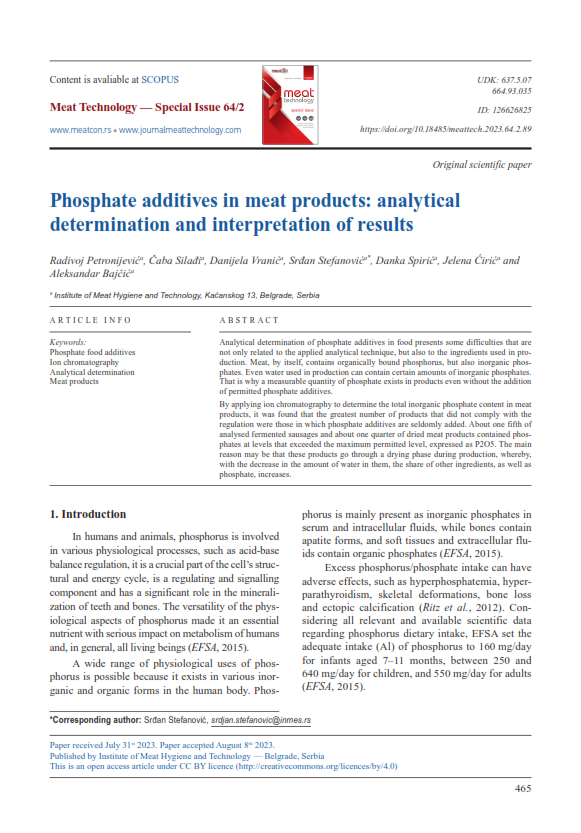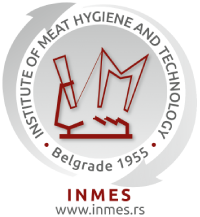Phosphate additives in meat products: analytical determination and interpretation of results
Abstract
Analytical determination of phosphate additives in food presents some difficulties that are not only related to the applied analytical technique, but also to the ingredients used in production. Meat, by itself, contains organically bound phosphorus, but also inorganic phosphates. Even water used in production can contain certain amounts of inorganic phosphates. That is why a measurable quantity of phosphate exists in products even without the addition of permitted phosphate additives.
By applying ion chromatography to determine the total inorganic phosphate content in meat products, it was found that the greatest number of products that did not comply with the regulation were those in which phosphate additives are seldomly added. About one fifth of analysed fermented sausages and about one quarter of dried meat products contained phosphates at levels that exceeded the maximum permitted level, expressed as P2O5. The main reason may be that these products go through a drying phase during production, whereby, with the decrease in the amount of water in them, the share of other ingredients, as well as phosphate, increases.





